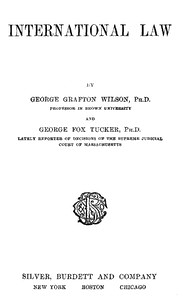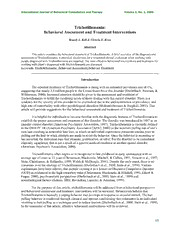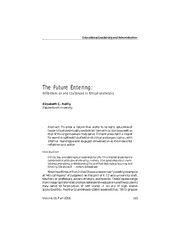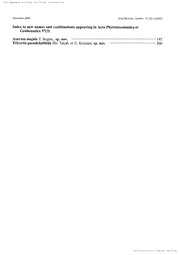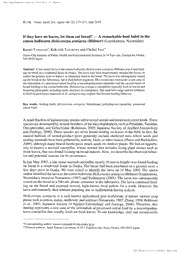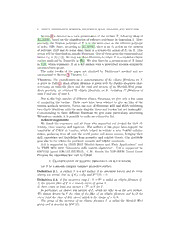
Classifications of elliptic fibrations of a singular K3 surface PDF
Preview Classifications of elliptic fibrations of a singular K3 surface
CLASSIFICATIONS OF ELLIPTIC FIBRATIONS OF A SINGULAR K3 SURFACE MARIEJOSE´ BERTIN,ALICEGARBAGNATI,RUTHIHORTSCH,ODILELECACHEUX, 5 MAKIKOMASE,CEC´ILIASALGADO,ANDURSULAWHITCHER 1 0 2 Abstract. We classify, up to automorphisms, the elliptic fibrations on the n singularK3surfaceX whosetranscendentallatticeisisometricto(cid:104)6(cid:105)⊕(cid:104)2(cid:105). a J 9 2 1. Introduction ] We classify elliptic fibrations on the singular K3 surface X associated to the G Laurent polynomial A 1 1 1 x y y z z x . x+ +y+ +z+ + + + + + + . h x y z y x z y x z t a InordertocomputetheN´eron-Severilattice,thePicardnumber,andotherbasic m properties of an algebraic surface, it is useful to identify an elliptic fibration on the [ surface. Moreover,inviewofdifferentapplications,onemaybeinterestedinfinding all the elliptic fibrations of a certain type. The fibrations of rank 0 and maximal 1 torsion lead more easily to the determination of the L−series of the variety [Ber]. v 4 Those of positive rank lead to symplectic automorphisms of infinite order of the 8 variety. Lenstra’s Elliptic Curve Method (ECM) for finding small factors of large 4 numbers originally used elliptic curves on Q with a torsion-group of order 12 or 16 7 and rank ≥ 1 on Q [M], [AM] . One way to obtain infinite families of such curves 0 is to use fibrations of modular surfaces, as explained by Elkies [El1]. . 1 If the Picard number of a K3 surface is large, there may be an infinite number 0 of elliptic fibrations, but there is only a finite number of fibrations up to automor- 5 phisms,asprovedbySterk[St]. Oguisousedageometricmethodtoclassifyelliptic 1 : fibrations in [O]. Some years later, Nishiyama [Nis] proposed a lattice-theoretic v technique to produce such classifications, recovering Oguiso’s results and classify- i X ingotherKummerandK3surfaces. Sincethen, resultsofthesametypehavebeen r obtained by various authors [Ku], [ES], [BL]. a Recently, the work of [BKW] described three possible classifications of elliptic fibrations on a K3 surface, shining a new light on the meaning of what is a class of equivalence of elliptic fibrations. In particular, they proposed a J -classification of 1 elliptic fibrations up to automorphisms of the surface and a J -classification of the 2 framelatticesofthefibrations. ForourK3surface, thetwoclassificationscoincide. Thus,itisparticularlyinterestingtoexhibithereanJ -classificationbytheKneser- 2 Nishiyama method, since in general it is not easy to obtain the J -classification. 1 This topic will be explained in detail in Section 2. 2010 Mathematics Subject Classification. Primary 14J28, 14J27; Secondary 11G05, 11G42, 14J33. Key words and phrases. K3surfaces,ellipticfibrations. 1 2 BERTIN,GARBAGNATI,HORTSCH,LECACHEUX,MASE,SALGADO,ANDWHITCHER Section 3 is devoted to a toric presentation of the surface X, following ideas of [KLMSW], based on the classification of reflexive polytopes in dimension 3. More precisely, the Newton polytope of X is in the same class as the reflexive polytope of index 1529. Since, according to [KLMSW], there is an S action on the vertices 4 of polytope 1529 and its polar dual, there is a symplectic action of S on X. This 4 actionwillbedescribedonspecificfibrations. Oneofthemgivesthetranscendental latticeT =(cid:104)6(cid:105)⊕(cid:104)2(cid:105).WemayusethesefibrationstorelateX toamodularelliptic X surface analyzed by Beauville in [Be]. We also describe a presentation of X found in [GS], which represents X as a K3 surface with a prescribed abelian symplectic automorphism group. The main results of the paper are obtained by Nishiyama’s method and are summarized in Section 4, Theorem 4.1. Theorem. The classification up to automorphisms of the elliptic fibrations on X is given in Table 1. Each elliptic fibration is given with the Dynkin diagrams char- acterizing its reducible fibers and the rank and torsion of its Mordell-Weil group. More precisely, we obtained 52 elliptic fibrations on X, including 17 fibrations of rank 2 and one of rank 3. Due to the high number of different elliptic fibrations, we give only a few cases of computing the torsion. These cases have been selected to give an idea of the various methods involved. Notice the case of fibrations #22 and #22b exhibiting twoellipticfibrationswiththesamesingularfibersandtorsionbutnotisomorphic. Corresponding to these different fibrations we give some particularly interesting Weierstrass models; it is possible to make an exhaustive list. Acknowledgements We thank the organizers and all those who supported our project for their ef- ficiency, their tenacity and expertise. The authors of the paper have enjoyed the hospitality of CIRM at Luminy, which helped to initiate a very fruitful collabo- ration, gathering from all over the world junior and senior women, bringing their skill, experience and knowledge from geometry and number theory. Our gratitude goes also to the referee for pertinent remarks and helpful comments. A.G is supported by FIRB 2012 “Moduli Spaces and Their Applications” and by PRIN 2010–2011 “Geometria delle variet`a algebriche”. C.S is supported by FAPERJ (grant E26/112.422/2012). U.W. thanks the NSF-AWM Travel Grant Program for supporting her visit to CIRM. 2. Classification of elliptic fibrations on K3 surfaces Let S be a smooth complex compact projective surface. Definition 2.1. A surface S is a K3 surface if its canonical bundle and its irreg- ularity are trivial, that is, if K (cid:39)O and h1,0(S)=0. S S Definition 2.2. A flat surjective map E :S →P1 is called an elliptic fibration if: 1) the generic fiber of E is a smooth curve of genus 1; 2) there exists at least one section s:P1 →S for E. In particular, we choose one section of E, which we refer to as the zero section. We always denote by F the class of the fiber of an elliptic fibration and by O the curve (and the class of this curve) which is the image of s in S. The group of the sections of an elliptic fibration E is called the Mordell–Weil group and is denoted by MW(E). CLASSIFICATIONS OF ELLIPTIC FIBRATIONS OF A SINGULAR K3 SURFACE 3 AgenericK3surfacedoesnotadmitellipticfibrations,butifthePicardnumber of the K3 is sufficiently large, it is known that the surface must admit at least one elliptic fibration (see Proposition 2.3). On the other hand, it is known that a K3 surface admits a finite number of elliptic fibrations up to automorphisms (see Proposition2.5). Thus,averynaturalproblemistoclassifytheellipticfibrationson a given K3 surface. This problem has been discussed in several papers, starting in theEighties. Thereareessentiallytwodifferentwaystoclassifyellipticfibrationson K3surfacesdescribedin[O]and[Nis]. Insomeparticularcases,athirdmethodcan beapplied;see[Ku]. First,however,wemustintroduceadifferentproblem: “What does it mean to ‘classify’ elliptic fibrations?” A deep and interesting discussion of thisproblemisgivenin[BKW],wheretheauthorsintroducethreedifferenttypesof classificationsofellipticfibrationsandprovethatundercertain(strong)conditions these three different classifications collapse to a unique one. We observe that it wasalreadyknownby[O]thatingeneralthesethreedifferentclassificationsdonot collapse to a unique one. We now summarize the results by [BKW] and the types of classifications. 2.1. Types of classifications of elliptic fibrations on K3 surfaces. In this section we recall some of the main results on elliptic fibrations on K3 surfaces (for example, compare [ScSh]), and we introduce the different classifications of elliptic fibrations discussed in [BKW]. 2.1.1. The sublattice U and the J -classification. Let S be a K3 surface and E : 0 S → P1 be an elliptic fibration on S. Let F ∈ NS(S) be the class of the fiber of E. Then F is a nef divisor which defines the map φ : S → P(H0(S,F)∗) which |F| sends every point p∈S to (s (p):s (p):...:s (p)), where {s } is abasis of 0 1 r i i=1,...r H0(S,F),i.e. abasisofsectionsofthelinebundleassociatedtothedivisorF. The map φ is the elliptic fibration E. Hence, every elliptic fibration on a K3 surface |F| is uniquely associated to an irreducible nef divisor (with trivial self intersection). Since E : S → P1 admits a section, there exists a rational curve which intersects every fiber in one point. Its class in NS(S) is denoted by O and has the following intersection properties O2 = −2 (since O is a rational curve) and FO = 1 (since O is a section). Thus, the elliptic fibration E : S → P1 (with a chosen section, as in Definition 2.2) is uniquely associated to a pair of divisors (F,O). This pair of (cid:20) (cid:21) 0 1 divisorsspansalatticewhichisisometrictoU,representedbythematrix , 1 0 (considering the basis F, F +O). Hence each elliptic fibration is associated to a chosen embedding of U in NS(S). On the other hand the following result holds: Proposition 2.3. ([Ko1, Lemma 2.1] and [Nik1, Corollary 1.13.15]) Let S be a K3 surface, such that there exists a primitive embedding ϕ:U (cid:44)→NS(S). Then S admits an elliptic fibration. Let S be a K3 surface with Picard number ρ(S)≥13. Then, there is a primitive embedding of U in NS(S) and hence S admits at least one elliptic fibration. A canonical embedding of U in NS(S) is defined as follows: let us denote by b and b the unique two primitive vectors of U with trivial self intersection. An 1 2 embedding of U in NS(S) is called canonical if the image of b in NS(S) is a nef 1 divisor and the image of b −b in NS(S) is an effective irreducible divisor. 2 1 4 BERTIN,GARBAGNATI,HORTSCH,LECACHEUX,MASE,SALGADO,ANDWHITCHER The first naive classification of the elliptic fibrations that one can consider is the classification described above, roughly speaking: two fibrations are different if they correspond to different irreducible nef divisors with trivial self intersections. This essentially coincides with the classification of the canonical embeddings of U in NS(S). Following [BKW] we call this classification the J -classification of the elliptic 0 fibrations on S. Clearly, it is possible (and indeed likely, if the Picard number is sufficiently large) that there is an infinite number of irreducible nef divisors with trivial self intersection and also infinitely many copies of U canonically embedded in NS(S). Thus, it is possible that there is an infinite number of fibrations in curves of genus 1 on S and moreover an infinite number of elliptic fibrations on S. 2.1.2. Automorphisms and the J -classification. The automorphism group of a va- 1 riety transforms the variety to itself preserving its structure, but moves points and subvarieties on the variety. Thus, if one is considering a variety with a nontrivial automorphism group, one usually classifies objects on the variety up to automor- phisms. Let S be a K3 surface with a sufficiently large Picard number (at least 2). Then the automorphism group of S is in general nontrivial, and it is often of infinite order. More precisely, if ρ(S) = 2, then the automorphism group of S is finite if and only if there is a vector with self intersection either 0 or −2 in the N´eron– Severi group. If ρ(S) ≥ 3, then the automorphism group of S is finite if and only if the N´eron–Severi group is isometric to a lattice contained in a known finite list of lattices, cf. [Ko2]. Let us assume that S admits more than one elliptic fibration (up to the J -classification defined above). This means that there exist at least 0 two elliptic fibrations E : S → P1 and E(cid:48) : S → P1 such that F (cid:54)= F(cid:48) ∈ NS(S), where F (resp. F(cid:48)) is the class of the fiber of the fibration E (resp. E(cid:48)). By the previous observation, it seems very natural to consider E and E(cid:48) equivalent if there exists an automorphism of S which sends E to E(cid:48). This is the idea behind the J -classification of the elliptic fibrations introduced in [BKW]. 1 Definition 2.4. The J -classification of the elliptic fibrations on a K3 surface is 1 the classification of elliptic fibrations up to automorphisms of the surface. To be more precise: E is J -equivalent to E(cid:48) if and only if there exists g ∈ Aut(S) such 1 that E =E(cid:48)◦g. We observe that if two elliptic fibrations on a K3 surface are equivalent up to automorphism, then all their geometric properties (the type and the number of singular fibers, the properties of the Mordell–Weil group and the intersection properties of the sections) coincide. This is true essentially by definition, since an automorphism preserves all the “geometric” properties of subvarieties on S. The advantages of the J -classification with respect to the J -classification are 1 0 essentially two. The first is more philosophical: in several contexts, to classify an objectonvarietiesmeanstoclassifytheobjectuptoautomorphismsofthevariety. The second is more practical and is based on an important result by Sterk: the J -classification must have a finite number of classes: 1 Proposition2.5. [St]Uptoautomorphisms, thereexistsafinitenumberofelliptic fibrations on a K3 surface. CLASSIFICATIONS OF ELLIPTIC FIBRATIONS OF A SINGULAR K3 SURFACE 5 2.1.3. The frame lattice and the J -classification. The main problem of the J - 2 1 classification is that it is difficult to obtain a J -classification of elliptic fibrations 1 on K3 surfaces, since it is in general difficult to give a complete description of the automorphism group of a K3 surface and the orbit of divisors under this group. An intermediate classification can be introduced, the J -classification. The J - 2 2 classification is not as fine as the J -classification, and its geometric meaning is 1 not as clear as the meanings of the classifications introduced above. However, the J -classification can be described in a very natural way in the context of lattice 2 theory, and there is a standard method to produce it. SincetheJ -classificationisessentiallytheclassificationofcertainlatticesstrictly 2 related to the elliptic fibrations, we recall here some definitions and properties of lattices related to an elliptic fibration. We have already observed that every elliptic fibration on S is associated to an embedding η :U (cid:44)→NS(S). Definition 2.6. The orthogonal complement of η(U) in NS(S), η(U)⊥NS(S), is denoted by W and called the frame lattice of E. E The frame lattice of E encodes essentially all the geometric properties of E, as we explain now. We recall that the irreducible components of the reducible fibers which do not meet the zero section generate a root lattice, which is the direct sum of certain Dynkin diagrams. Let us consider the root lattice (W ) of W . Then E root E the lattice(W ) is exactlythe directsum ofthe Dynkindiagram corresponding E root to the reducible fibers. To be more precise if the lattice E (resp. E , E , D , 8 7 6 n n ≥ 4, A , m ≥ 3) is a summand of the lattice (W ) , then the fibration E m E root admits a fiber of type II∗ (resp. IV∗, III∗, I∗ , I ). However, the lattices n−4 m+1 A and A can be associated to two different types of reducible fibers, i.e. to I 1 2 2 and III and to I and IV respectively. We cannot distinguish between these two 3 different cases using lattice theory. Moreover, the singular non-reducible fibers of an elliptic fibration can be either of type I or of type II. 1 GivenanellipticfibrationE onaK3surfaceS,thelatticeTr(E):=U⊕(W ) E root is often called the trivial lattice (see [ScSh, Lemma 8.3] for a more detailed discus- sion). Let us now consider the Mordell–Weil group of an elliptic fibration E on a K3 surface S: its properties are also encoded in the frame W , indeed MW(E) = E W /(W ) . In particular, E E root rank(MW(E))=rank(W )−rank((W ) ) and E E root (MW(E)) =(W ) /(W ) , tors E root E root where, for every sublattice L ⊂ NS(S), L denotes the primitive closure of L in NS(S), i.e. L:=(L⊗Q)∩NS(S). Definition 2.7. The J -classification of elliptic fibrations on a K3 surface is the 2 classification of their frame lattices. It appears now clear that if two elliptic fibrations are identified by the J - 2 classification, they have the same trivial lattice and the same Mordell–Weil group (since these objects are uniquely determined by the frame of the elliptic fibration). We observe that if E and E(cid:48) are identified by the J -classification, then there 1 exists an automorphism g ∈ Aut(S), such that E = E(cid:48) ◦g. The automorphism g induces an isometry g∗ on NS(S) and it is clear that g∗ : W → W is an E E(cid:48) 6 BERTIN,GARBAGNATI,HORTSCH,LECACHEUX,MASE,SALGADO,ANDWHITCHER isometry. Thus the elliptic fibrations E and E(cid:48) have isometric frame lattices and so are J -equivalent. 2 The J -classification is not as fine as the J -classification; indeed, if h : W → 2 1 E W isanisometry,apriorithereisnoreasontoconcludethatthereexistsanauto- E(cid:48) morphism g ∈ Aut(S) such that g∗ = h; indeed comparing the J -classification |WE 1 given in [O] and the J -classification given in [Nis] for the Kummer surface of the 2 product of two non-isogenous elliptic curves, one can check that the first one is more fine than the second one. The advantage of the J -classification sits in its strong relation with the lattice 2 theory; indeed, there is a method which allows one to obtain the J -classification 2 of elliptic fibration on several K3 surfaces. This method is presented in [Nis] and will be described in this paper in Section 4.1. 2.1.4. Resultsonthedifferentclassificationtypes. Oneofthemainresultsof[BKW] isabouttherelationsamongthevarioustypesofclassificationsofellipticfibrations onK3surfaces. FirstweobservethatthereexiststwosurjectivemapsJ →J and 0 1 J → J , which are in fact quotient maps (cf. [BKW, Formulae (54) and (57)]). 0 2 This induces a map J →J which is not necessarily a quotient map. 1 2 The [BKW, Proposition C’] gives a bound for the number of different elliptic fibrations up to the J -classification, which are identified by the J -classification. 1 2 As a Corollary the following is proved: Corollary 2.8. ([BKW, Corollary D]) Let S be a K3 surface such that the (a,b,c) (cid:20) (cid:21) 2a b transcendental lattice of S is isometric to . If (a,b,c) is one of the b 2c following (1,0,1), (1,1,1), (2,0,1), (2,1,1), (3,0,1), (3,1,1), (4,0,1), (5,1,1), (6,1,1), (3,2,1), then J (cid:39)J . 1 2 2.2. AclassificationmethodforellipticfibrationsonK3surfaces. Thefirst paper about the classification of elliptic fibrations on K3 surfaces is due to Oguiso, [O]. He gives a J -classification of the elliptic fibrations on the Kummer surface 1 of the product of two non-isogenous elliptic curves. The method proposed in [O] is very geometric: it is strictly related to the presence of a certain automorphism (a non–symplectic involution) on the K3 surface. Since one has to require that the K3 surface admits this special automorphism, the method suggested in [O] can be generalized only to certain special K3 surfaces (see [Kl] and [CG]). Seven years after the paper [O], a different method was proposed by Nishiyama in [Nis]. This method is less geometric and more related to the lattice structure of the K3 surfaces and of the elliptic fibrations. Nishiyama applied this method in order to obtain a J -classification of the elliptic fibrations, both on the K3 surface 2 already considered in [O] and on other K3 surfaces (cyclic quotients of the product of two special elliptic curves) to which the method by Oguiso cannot be applied. Later, in [BL], the method is used to give a J -classification of elliptic fibrations 2 on a K3 surface whose transcendental lattice is (cid:104)4(cid:105)⊕(cid:104)2(cid:105). ThemainideaofNishiyama’smethodisthefollowing: weconsideraK3surface S and its transcendental lattice T . Then we consider a lattice T such that: T is S negative definite; rank(T) = rank(T )+4; the discriminant group and form of T S are the same as the ones of T . We consider primitive embeddings of φ : T (cid:44)→ L, S where L is a Niemeier lattice. The orthogonal complement of φ(T) in L is in fact the frame of an elliptic fibration on S. CLASSIFICATIONS OF ELLIPTIC FIBRATIONS OF A SINGULAR K3 SURFACE 7 TheclassificationoftheprimitiveembeddingsofT inLforeveryNiemeierlattice L coincides with the J -classification of the elliptic fibrations on S. We will give 2 more details on Nishiyama’s method in Section 4.1. Since this method is related only to the lattice properties of the surface, a priori one can not expect to find a J -classification by using only this method. 1 ThankstoCorollary2.8,(see[BKW])theresultsobtainedbyNishiyama’smethod are sometimes stronger than expected. In particular, we will see that in our case (as in the case described in [BL]) the classification that we obtain for the ellip- tic fibrations on a certain K3 surface using the Nishiyama’s method, is in fact a J -classification (and not only a J -classification). 1 2 2.3. Torsion part of the Mordell–Weil group of an elliptic fibration. In Section 4.2, we will classify elliptic fibrations on a certain K3 surface, determining both the trivial lattice and the Mordell–Weil group. A priori, steps (8) and (9) of the algorithm presented in 4.1 completely determine the Mordell–Weil group. In any case, we can deduce some information on the torsion part of the Mordell– Weil group by considering only the properties of the reducible fibers of the elliptic fibration. This makes the computation easier, so here we collect some results on the relations between the reducible fibers of a fibration and the torsion part of the Mordell–Weil group. First, we recall that a section meets every fiber in exactly one smooth point, so a section meets every reducible fiber in one point of a component with multiplicity 1 (we recall that the fibers of type I∗, II∗, III∗, IV∗ have reducible components n with multiplicity greater than 1). We will call the component of a reducible fiber which meets the zero section the zero component or trivial component. Every section (being a rational point of an elliptic curve defined over k(P1)) inducesanautomorphismofeveryfiber,inparticularofeveryreduciblefiber. Thus, the presence of an n-torsion section implies that all the reducible fibers of the fibration admits Z/nZ as subgroup of the automorphism group. In particular, this implies the following (well known) result: Proposition 2.9. (cf. [ScSh, Section 7.2]) Let E : S → P1 be an elliptic fibration and let MW(E) the torsion part of the Mordell–Weil group. tors If there is a fiber of type II∗, then MW(E) =0. tors If there is a fiber of type III∗, then MW(E) ≤(Z/2Z). tors If there is a fiber of type IV∗, then MW(E) ≤(Z/3Z). tors IfthereisafiberoftypeI∗ andnisanevennumber,thenMW(E) ≤(Z/2Z)2. n tors If there is a fiber of type I∗ and n is an odd number, then MW(E) ≤(Z/4Z). n tors 2.3.1. Coversofuniversalmodularellipticsurfaces. Thetheoryofuniversalelliptic surfaces parametrizing elliptic curves with prescribed torsion can also be useful when finding the torsion subgroup of a few elliptic fibrations on the list. It relies on the following definition/proposition. Proposition 2.10 (see [CE, 2.1.4] or [Shio2]). Let π : X → B be an elliptic fibration on a surface X. Assume π has a section of order N, for some N ∈ N, with N ≥ 4. Then X is a cover of the universal modular elliptic surface, E , of N level N. After studying the possible singular fibers of the universal surfaces above, one gets the following. 8 BERTIN,GARBAGNATI,HORTSCH,LECACHEUX,MASE,SALGADO,ANDWHITCHER Proposition 2.11. Let E be the universal modular elliptic surface of level N. N The following hold: i) If N ≥ 5 then E admits only semi-stable singular fibers. They are all of type N I with m|N. m ii) The surface E is a rational elliptic surface with singular fibers I∗,I ,I . 4 1 4 1 2.3.2. Height formula for elliptic fibrations. The group structure of the Mordell– Weilgroupisthegroupstructureoftherationalpointsoftheellipticcurvedefined over the function field of the basis of the fibration. It is also possible to equip the Mordell–WeilgroupofapairingtakingvaluesinQ, whichtransformstheMordell– WeilgrouptoaQ-lattice. Herewerecallthedefinitionsandthemainpropertiesof this pairing. For a more detailed description we refer to [ScSh] and to the original paper [Shio1]. Definition 2.12. Let E : S → C be an elliptic fibration and let O be the zero section. TheheightpairingistheQ-valuedpairing,<−,−>:MW(E)×MW(E)→ Q defined on the sections of an elliptic fibration as follows: (cid:88) <P,Q>=χ(S)+P ·O+Q·O− contr (P,Q), c c∈C where χ(S) is the holomorphic characteristic of the surface S, · is the inter- section form on NS(S), C = {c ∈ C such that the fiber E−1(c) is reducible} and contr (P,Q) is a contribution which depends on the type of the reducible fiber and c on the intersection of P and Q with such a fiber as described in [ScSh, Table 4]. (cid:80) The value h(P):=<P,P >=2χ(S)+2P ·O− contr (P,P), is called the c∈C c height of the section P. We observe that the height formula is induced by the projection of the intersec- tion form on NS(S)⊗Q to the orthogonal complement of the trivial lattice Tr(E) (cf. [ScSh, Section 11]). Proposition 2.13. ([ScSh, Section 11.6]) Let P ∈ MW(E) be a section of the elliptic fibration E : S → C. The section P is a torsion section if and only if h(P)=0. 3. The K3 surface X Thegoalofthispaperistheclassificationoftheellipticfibrationsontheunique K3 surface X such that T (cid:39) (cid:104)6(cid:105) ⊕ (cid:104)2(cid:105). This surface is interesting for several X reasons, and we will present it from different points of view. 3.1. A toric hypersurface and the symmetric group S . Let N be a lattice 4 isomorphic to Zn. The dual lattice M of N is given by Hom(N,Z); it is also isomorphic to Zn. We write the pairing of v ∈N and w ∈M as (cid:104)v,w(cid:105). Given a lattice polytope (cid:5) in N, we define its polar polytope (cid:5)◦ to be (cid:5)◦ = {w ∈M|(cid:104)v,w(cid:105) ≥ −1∀v ∈ K}. If (cid:5)◦ is also a lattice polytope, we say that (cid:5) is a reflexive polytope and that (cid:5) and (cid:5)◦ are a mirror pair. A reflexive polytope must contain(cid:126)0;furthermore,(cid:126)0istheonlyinteriorlatticepointofthepolytope. Reflexive polytopeshavebeenclassifiedin1,2,3,and4dimensions. In3dimensions,thereare 4,319 reflexive polytopes, up to an overall isomorphism preserving lattice structure CLASSIFICATIONS OF ELLIPTIC FIBRATIONS OF A SINGULAR K3 SURFACE 9 [KS1, KS2]. The database of reflexive polytopes is incorporated in the open-source computer algebra software [S+]. Now, consider the one-parameter family of K3 surfaces given by 1 1 1 x y y z x z (3.1) x+ +y+ +z+ + + + + + + +λ. x y z y x z y z x This family of K3 surfaces was first studied in [Verr], where its Picard-Fuchs equation was computed. A general member of the family has Picard lattice given by U ⊕(cid:104)6(cid:105). TheNewtonpolytope(cid:5)◦determinedbythefamilyofpolynomialsinEquation3.1 isareflexivepolytopewith12verticesand14facets. Thispolytopehasthegreatest numberoffacetsofanythree-dimensionalreflexivepolytope;furthermore,thereisa uniquethree-dimensionalreflexivepolytopewiththisproperty, uptoisomorphism. In the database of reflexive polytopes found in [S+], this polytope has index 1529. We illustrate (cid:5)◦ and its polar polytope (cid:5) in Figures 1 and 2. Figure 1. Reflexive Figure 2. Reflexive polytope 2355 polytope 1529 Letusrecallsomestandardconstructionsandnotationsinvolvingtoricvarieties. A cone in N is a subset of the real vector space NR =N⊗R generated by nonneg- ative R-linear combinations of a set of vectors {v ,...,v }⊂N. We assume that 1 m cones are strongly convex, that is, they contain no line through the origin. Note that each face of a cone is a cone. A fan Σ consists of a finite collection of cones such that each face of a cone in the fan is also in the fan, and any pair of cones in the fan intersects in a common face. We say Σ is simplicial if the generators of each cone in Σ are linearly independent over R. If every element of NR belongs to some cone in Σ, we say Σ is complete. A fan Σ defines a toric variety V . If the Σ fan is complete, we may describe V using homogeneous coordinates, in a process Σ analogoustotheconstructionofPn asaquotientspaceof(C∗)n. Thehomogeneous coordinates have one coordinate z for each generator of a one-dimensional cone of j Σ. WemayobtainafanRfromamirrorpairofreflexivepolytopesintwoequivalent ways. We may take cones over the faces of (cid:5)⊂NR, or we may take the normal fan 10 BERTIN,GARBAGNATI,HORTSCH,LECACHEUX,MASE,SALGADO,ANDWHITCHER to the polytope (cid:5)◦ ⊂MR. Let Σ be a simplicial refinement of R such that the one- dimensional cones of Σ are generated by the nonzero lattice points v , k = 1...q, k of (cid:5); we call such a refinement a maximal projective subdivision. Then the variety V isanorbifold. Theninhomogeneouscoordinates,wehaveonecoordinatez for Σ k each nonzero lattice point in (cid:5). We may describe the anticanonical hypersurfaces in homogeneous coordinates using polynomials of the form: q (3.2) p= (cid:88) c (cid:89)z(cid:104)vk,x(cid:105)+1. x k x∈(cid:5)◦∩M k=1 Here the c are arbitrary coefficients. Note that p has one monomial for each x lattice point of (cid:5)◦. If the reflexive polytope (cid:5) is three-dimensional, V is smooth Σ andsmoothanticanonicalhypersurfacesinV areK3surfaces(see[CK]fordetails). Σ The orientation-preserving symmetry group of (cid:5) and (cid:5)◦ is the symmetric group S . This group acts transitively on the vertices of (cid:5)◦. As the authors of [KLMSW] 4 observe, by setting the coefficients c corresponding to the vertices of (cid:5)◦ to 1 and x the coefficient corresponding to the origin to a parameter λ, we obtain a naturally one-parameter family of K3 hypersurfaces with generic Picard rank 19: q (3.3) p= (cid:88) (cid:89)zk(cid:104)vk,x(cid:105)+1+λz1...zq. x∈vertices((cid:5)◦)k=1 Equation 3.3 is simply Equation 3.1 in homogeneous coordinates. If we view S as acting on the vertices of (cid:5) rather than the vertices of (cid:5)◦, we 4 obtainapermutationofthehomogeneouscoordinatesz . Theauthorsof[KLMSW] k show that this action of S restricts to a symplectic action on each K3 surface in 4 the pencil given by Equation 3.3; in particular, we have a symplectic action of S 4 on X. In the affine coordinates of Equation 3.1, the group action is generated by an element s of order 2 which acts by (x,y,z) (cid:55)→ (1/x,1/z,1/y) and an element 2 s of order 4 which acts by (x,y,z)(cid:55)→(x/y,x/z,x). 4 3.2. The K3 surface X. Definition 3.1. Let X be the K3 surface defined by F =0, where F is the numer- ator of 1 1 1 x y y z x z x+ +y+ +z+ + + + + + + . x y z y x z y z x The K3 surface X is the special member of the family of K3 surfaces described in (3.1) which is obtained by setting λ=0. We will use three elements of the symplectic group S : the three-cycle s given 4 3 by (x,y,z)(cid:55)→(y,z,x), the four-cycle s and the two-cycle s . 4 2 We describe explicitly a first elliptic fibration, which gives the main properties of X.
The list of books you might like

Do Epic Shit

The Spanish Love Deception

Believe Me

The 48 Laws of Power

Photography Second edition

QSAR - Hansch Analysis and Related Approaches

Understanding and Reducing Landslide Disaster Risk, Volume 4: Testing, Modeling and Risk Assessment
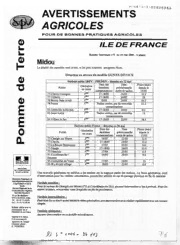
Avertissements Agricoles - Pomme de terre - Ile de France - 2006 - 5

CENTRIFLOW 3D PLug FaN WITH PM MOTOR
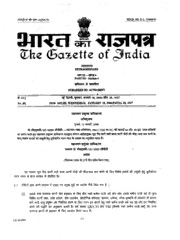
Extraordinary Gazette of India, 2006, No. 622

DTIC ADA457505: Information Sharing Environment Interim Implementation Plan
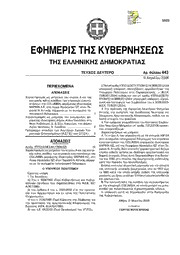
Greek Government Gazette: Part 2, 2006 no. 443
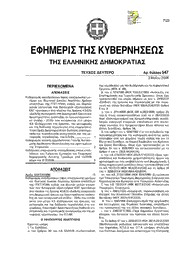
Greek Government Gazette: Part 2, 2006 no. 547

bênção de um abade e de uma abadessa

Bê-a-Blog
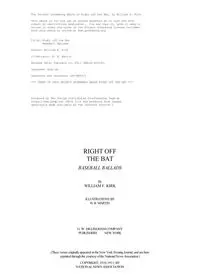
Right off the Bat by William F Kirk

The Dancing Floor
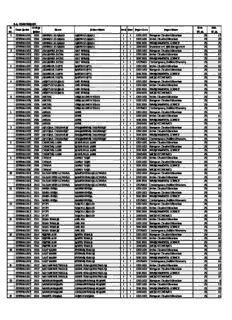
Sr. No. Exam Rollno College Rollno Name Father Name Part Sem Paper Code Paper Name Max

C. V. de Francisco Aguilar Piñal
